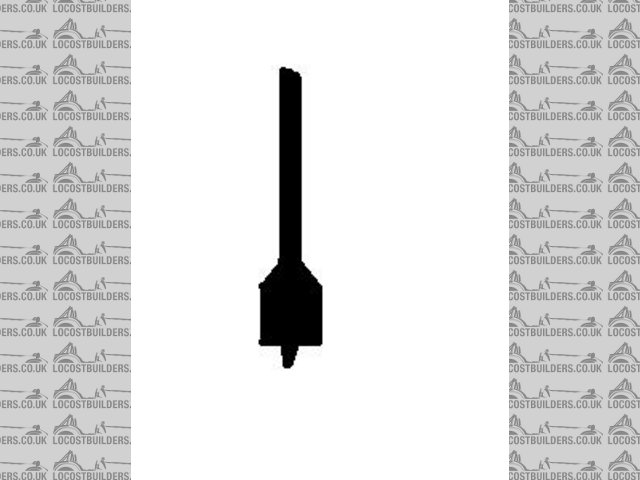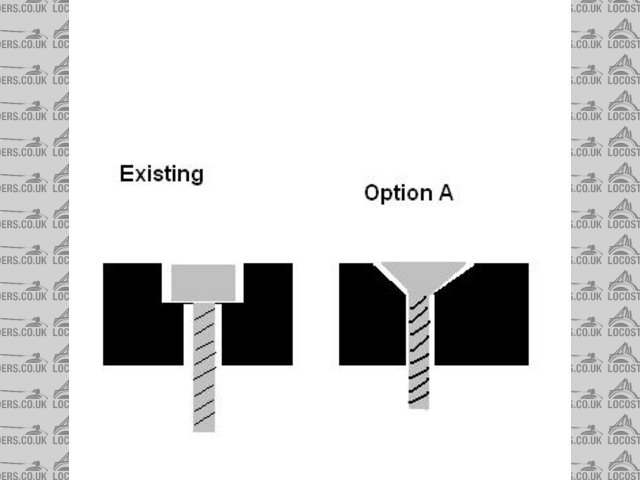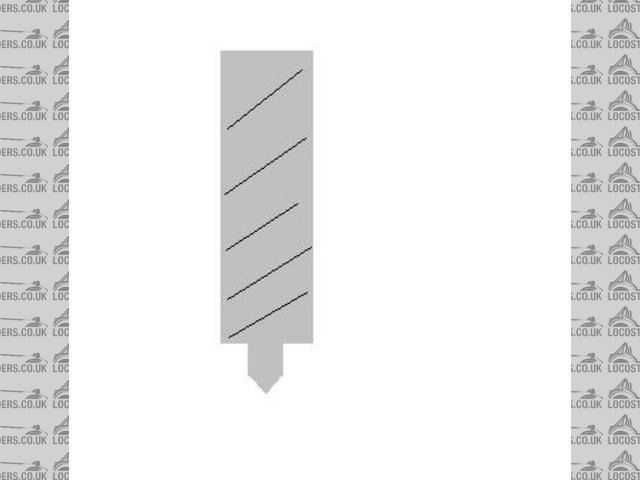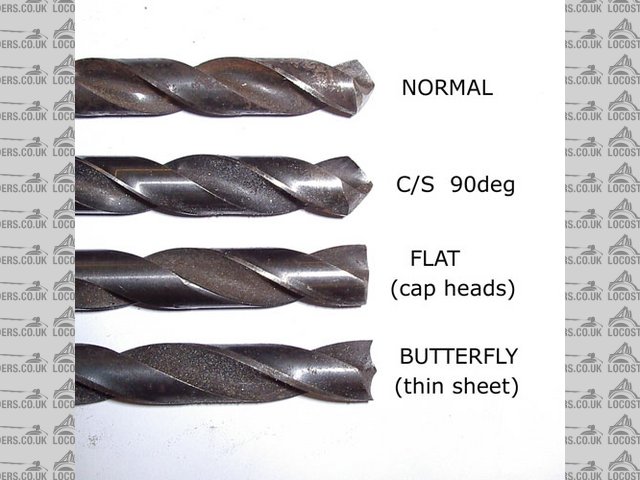ditchlewis
|
| posted on 12/9/07 at 07:49 AM |

|
|
What is a Flat Drill
I have to re drill the base of my starter motor. it is retained with a allen headed bolt that is flush with the face of the base.
the man at cambridge motorsport said i needed a flat head drill. what is one of these?
i know that i have to drill a hole for the bolt but then i have to ream out the base to get the bolt to sit flush with the face.
is a flat head drill bit one of these?
Ditch   
 
Rescued attachment flat drill.JPG
|
|
|
|
|
Hurdsey
|
| posted on 12/9/07 at 07:58 AM |

|
|
Nope thats a Flat Bit for wood.
I'm not an engineer but I think a flat head drill is designed to drill holes with a flat bottom instead of a bevelled bottom iyswim. I'm
sure a good Engineers merchants would stock them.
It may be reffered to as a Reamer but I'm not sure.
|
|
|
Mark Allanson
|
| posted on 12/9/07 at 07:59 AM |

|
|
..or perhaps an end mill
If you can keep you head, whilst all others around you are losing theirs, you are not fully aware of the situation
|
|
|
designer
|
| posted on 12/9/07 at 08:00 AM |

|
|
The drill you showed is for wood.
A flat drill the bloke is talking about is one used when the hole does not go through the piece being drilled and it leaves a flat bottom to the
hole.
Where are you drilling on the base? Are you just making another mounting hole?
|
|
|
JAG
|
| posted on 12/9/07 at 08:02 AM |

|
|
It's not referred to as a Reamer.
But it is a drill designed to cut a flat bottomed hole.
Be very careful when using it - the shorter cutting edge (than a normal drill) means they need a lot of torque to drive them and can only cut
relatively slowly 
Justin
Who is this super hero? Sarge? ...No.
Rosemary, the telephone operator? ...No.
Penry, the mild-mannered janitor? ...Could be!
|
|
|
Fred W B
|
| posted on 12/9/07 at 08:16 AM |

|
|
Its called a spot face tool.
If you can't find one can you change to a bolt with a countersunk head, as a chamfer tool is easier to find?
Cheers
Fred W B
[Edited on 12/9/07 by Fred W B]
You can do it quickly. You can do it cheap. You can do it right. – Pick any two.
|
|
|
ditchlewis
|
| posted on 12/9/07 at 08:31 AM |

|
|
many thanks lads       
the alloy mounting plate on my starter motor needs moving round. the existing holes have a flat bottom to them to seat the bolt flat and flush to the
face.
Fred's idea sounds good.
the question i now have is in a high torque application is option A (see below) more likley to fail than the existing option?
ditch   
[Edited on 12/9/07 by ditchlewis]
|
|
|
ditchlewis
|
| posted on 12/9/07 at 08:32 AM |

|
|
here is the pick
Ditch    
 
Rescued attachment options.JPG
|
|
|
02GF74
|
| posted on 12/9/07 at 09:06 AM |

|
|
quite possibly but not that you would ever achieve it.
basically, and I could be wrong, the weakest part of the bolt is the thinest part i.e. the threaded section - that would where it would fail so the
shape fo the bolt head does not matter.
|
|
|
Mr Rob
|
| posted on 12/9/07 at 10:11 AM |

|
|
If you have a bench grinder you can grind a normal drill bit flat. Drill the hole first with a normal drill an then go in with your new ground bit....
job done.
|
|
|
ditchlewis
|
| posted on 12/9/07 at 11:08 AM |

|
|
just remembered that i bought some bits very early on in my build that may do the job.
i will have to look and measure what i have.
i will have to drill a hole for the bolt first then i will have to use these bits (see below).      . these bits have a flat face on them. . these bits have a flat face on them.
Ditch   
 
Rescued attachment bit.JPG
|
|
|
iank
|
| posted on 12/9/07 at 12:04 PM |

|
|
That looks like a lip and spur drill (flat with a spike) I think they are just for wood (also called a dowel bit IIRC).
--
Never argue with an idiot. They drag you down to their level, then beat you with experience.
Anonymous
|
|
|
tks
|
| posted on 12/9/07 at 12:45 PM |

|
|
quote:
Originally posted by Mr Rob
If you have a bench grinder you can grind a normal drill bit flat. Drill the hole first with a normal drill an then go in with your new ground bit....
job done.
i wouold try this idea, because with a flat drill its not easy to pick the right place of drilling, saying that, when you cut down a normal drill, you
don't leave a cutting edge.
i would go for the countersunk screws.
The above comments are always meant to be from the above persons perspective.
|
|
|
timf
|
| posted on 12/9/07 at 01:07 PM |

|
|
you need something like this
http://www.screwfix.com/search.do;jsessionid=A0P1YSBZSQFOYCSTHZPCFFI?_dyncharset=UTF-8&fh_search=counterbore
or from ebay
http://stores.ebay.co.uk/Mattools_CUTTING-TOOLS_Countersinks-Counterbores_W0QQcolZ4QQdirZ1QQfsubZ3277677QQftidZ2QQtZkm
looks like

[Edited on 12/9/07 by timf]
A prisoner of war is a man who tries to kill you and fails, and then asks you not to kill him."
- Sir Winston S. Churchill, 1952
|
|
|
ditchlewis
|
| posted on 12/9/07 at 01:28 PM |

|
|
iank
the above drill was for steel and was titanium, it went through steel like butter          . .
problemis that i have used them all alot and they are probably blunt now    and they were about a ten to fifteen quid each. and they were about a ten to fifteen quid each.    
ditch   
|
|
|
02GF74
|
| posted on 12/9/07 at 01:43 PM |

|
|
when I had to do something like this i.e. fltten out hte bottom of a blind drilled hole, I used end mills.
mmart do a set from 4 to 10 mm.
|
|
|
Alan B
|
| posted on 12/9/07 at 02:08 PM |

|
|
As Timf shows the correct tool is called a counterbore......a spotface is essentially a shallow counterbore used on castings or rough surfacee to give
a true seating face.
They can be bought in sets with interchangeable pilots or individually.
|
|
|
907
|
| posted on 12/9/07 at 04:02 PM |

|
|
Mr Rob has the locost option.
In with a normal drill to below the surface, then take out the angle with a flat one.
A drill is a drill. How you just sharpen it depends on what you want to do.
Hth
Paul G
 
Rescued attachment drills-tx-s.jpg
|
|
|
NS Dev
|
| posted on 13/9/07 at 05:46 PM |

|
|
as Mr Rob and 907 said, just grind a std drill bit flat at the end.
I have used this to do spot facing many times, as spot face cutters are very expensive!!
Retro RWD is the way forward...........automotive fabrication, car restoration, sheetmetal work, engine conversion
retro car restoration and tuning
|
|
|
MikeRJ
|
| posted on 20/9/07 at 09:43 PM |

|
|
quote:
Originally posted by iank
That looks like a lip and spur drill (flat with a spike) I think they are just for wood (also called a dowel bit IIRC).
But they do work on metal with a bit of modification! My spot weld cutter fell to pieces during a job some time back and I modified one of these wood
bits to make the spike shorter and it ripped through dozens spot welds with little problem. It was a reasonably quality drill bit though, not a
cheapy.
|
|
|
iank
|
| posted on 21/9/07 at 09:35 AM |

|
|
Using them as a spot weld cutter would be fine I'd image, but they bind if you try and drill thick metal due to the cutting geometry.
http://en.wikipedia.org/wiki/Drill_bit
The one's I've got scream into wood with the lightest pressure, they actually seem to tunnel into the hole on their own.
--
Never argue with an idiot. They drag you down to their level, then beat you with experience.
Anonymous
|
|
|
Vindi_andy
|
| posted on 21/9/07 at 12:25 PM |

|
|
when we had to use flat ended drills at college during my apprenticeship(many moons ago) we always had to drill the hole with a standard drill first
then just flatten the bottom of the hole with the flat drill
Part of the problem I experienced was as someone else said earlier about the centreing also if you dont have a pre drilled hole the bit has a tendecy
to wander
|
|
|













